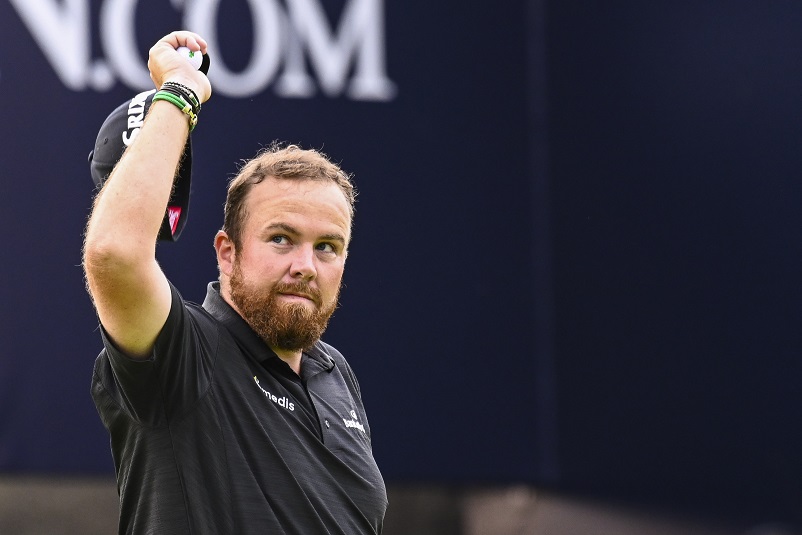 PGA TOUR’s Season of Championships continues at Royal St. George’s
PGA TOUR’s Season of Championships continues at Royal St. George’s
By Jim McCabe
For all the gallant efforts and judicious decisions made to stage most of the marquee golf championships during the pandemic world of 2020, a massive piece remained missing.
The Open Championship.
Unlike the Masters, which moved its tournament from April to November; or the U.S. Golf Association, which pushed the U.S. Open back from June to September; or the PGA of America, which changed its PGA from May to August, the R&A was handcuffed with far stricter lockdown rules set by the British government. In the end, the only prudent decision was to cancel.
It was the first time since the days of WWII (1940-45, to be exact) that we went without an Open Championship. And in all due respect to the Masters, U.S. Open, PGA, PLAYERS Championship and a host of other tournaments, the golf world was lesser for missing the venerable Open.
Its history is that revered, the respect for it universally spread.
Not that it was always like that, of course. In fact, given the nature of transportation in the 1930s, ‘40s, and ‘50s, players weren’t exactly hopping on steamships to sail the ocean blue. Ben Hogan famously played just once in the Open – an epic victory, of course.
Byron Nelson played in 1937, but never again till 1955, long after he had pretty much retired from the weekly grind of the PGA TOUR.
Sam Snead never endeared himself to British fans. Not on his first visit (1937, T-11), nor on his second, when he won at St. Andrews in 1946 and disparaged the course to any reporter who would quote him. In 1960, Snead and Arnold Palmer won the Canada Cup in Ireland, but ol’ Sammy couldn’t help himself. When asked if he’d play the Open Championship, he said no.
“Look, man, I can win $3,500 if I take the British Open,” he said. “But there’s $9,000 to the winner at the British. So, what would you do?”
Truthfully, who cares what the reporters would have done, but Snead played the Buick Open, finished ninth and earned $1,550. Palmer, who got nipped by Kel Nagle, earned $2,520 for second place in the British.
Speaking of Palmer, his is another name who represents the peculiarities of that era. When he won the first of his four Masters in 1958, Palmer was a hot commodity, but not a chance he was going to play the British Open. Instead, in late June and early July he was second in the Buick Open, won Long Island Open, then played well in the Rubber City Open and Insurance City Open.
All were played six time zones from Royal Lytham St. Anne’s.
Not that Palmer was criticized. It was the way of the golf world back then. Even the defending champion had to qualify for the Open Championship, so your tournament began with a fight just to outplay the 350 to 400 who teed it up in qualifying rounds.

To his credit, Palmer in 1960 deemed it his rightful duty to play in the Open, given that he had won the Masters and U.S. Open and had a chance to win the vaunted Grand Slam.
He didn’t in ’60, of course, but he won the Open in 1961 and ‘62 and pretty much established it as a mandatory challenge to any global golfer. Jack Nicklaus went even further when he said, “Any golfer worth his salt has to cross the sea and try to win the British Open.”
Using that as a measuring stick, one could suggest that American golfers amount to a massive pile of salt; 21 of them have accounted for more than half (31, to be exact) of the 60 Open Championships since 1960.
Tom Watson (five), Jack Nicklaus (three), and Tiger Woods (three) account for a good chunk of those, but the roster of American winners includes some notable names – Lee Trevino, Johnny Miller, Tom Weiskopf, David Duval, Phil Mickelson and Jordan Spieth.
You want a decade to ignite your Open Championship fever? Nothing beats the 1970s, when Nicklaus, Trevino, and Watson each won twice, and Weiskopf and Miller made it eight of 10 wins for Americans. The only two they didn’t win? Gary Player and Seve Ballesteros prevailed.
You want a reason to embrace this championship? Consider how Peter Thomson and Bobby Locke, iconic champions from Australia and South Africa, respectively, would travel outrageous distances for weeks, just to be part of a competition that is considered by most parts of the globe to be the true “world championship.”
Golfers from Japan and South America have been competing here for years; so, too, the Spaniards and Swedes, and Koreans and Canadians, and golfers from virtually every port in the world.
So rich in history, so flavorful in a style of play that is seen far too infrequently in pro golf. Links. It is easy to romanticize about the firm turf, the pot bunkers, the wind-swept land, large and flag greens, and the tantalizing way in which the ball bounces – sometimes into brutal unplayable heather and gorse – because this is how the game was introduced.
But because there isn’t much prime links land in the world – Scotland, England, Ireland and Australia dominate – most of the world’s golf courses that host tournaments are inland and built in a parkland style: Trees, plush green grass, much of it left to grow high to stymie golfers, putting surfaces with slopes and speeds.
Mid-July offers a break from the mundane stretch of parkland courses, so here’s a heartfelt thank you to the return of The Open Championship, to links, and to the pleasing vision of brown grass. Royal St. George’s, this year’s host, might be the least attractive venue in the Open Championship lineup, but don’t dismiss it.
To say you’re only the ninth or 10th best course in the Open Championship rota is akin to saying you’re only the ninth or 10th richest person in the world. Who’d turn away such an honor?
No one, of course. So, after being rudely interrupted in 2020, The Open Championship is back. The game as it was meant to be played. Let the passion flow forth.


































